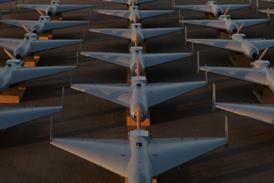Perhaps the time has come to look again at the traditional content of pilot recurrent training. The fundamental emergency which all pilots know that they will face in their simulator session is engine failure at or soon after take-off decision speed (V1). In every simulated take-off they are ready and waiting for it.
Insidious events, those which creep up on the pilot, can be as dangerous, especially when the aircraft is close to the ground. Because the cues do not shout their presence - like loss of power and the sudden yaw of serious asymmetry at engine failure - they can develop unnoticed, until recovery becomes difficult, or impossible.
Typical examples of an insidious fault is failure of the artificial horizon during instrument meteorological conditions (Korean Air Boeing 747-200F, take-off from Stansted, UK, 22 December, 1999) or misleading attitude information from the electronic flight instrument system (Crossair Saab 340, take-off from Zurich, Switzerland, 10 January).
It's easy to say that, in a vigilant crew, the non-handling pilot would notice the attitude divergence on his instruments, and that good cockpit resource management training will take care of that. But it didn't in these two cases, nor in the case of the Air India Boeing 747 (night take-off, Bombay, January 1978). Trainers should spring this one on every pilot during at least one take-off in every recurrent training session.
Loss of power can be insidious, too, and creates loss of control. The most dramatic example was the May 1995 Tarom Romanian Airlines Airbus Industrie A310-200 accident after take-off in bad weather from Bucharest. Autothrottle was selected, but the pilots were flying manually. When "take-off power" was reduced to "climb power" on the autothrottle, one of the power levers did not retard as commanded because it was jammed, so the other power lever overcompensated by reducing to idle over a period of more than 40s. The pilots did not notice the power asymmetry developing until the aircraft was in an extreme, unrecoverable attitude close to the ground. In training, engine failure does not have to be dramatic.
As for the Alaska Airlines MD-80 accident, this should be a warning to all operators of all modern jets, because they all have moving horizontal stabilisers. MD-80 pilots practise drills to prevent runaway trim, but the manual assumes they succeed in controlling the stabiliser before it reaches full travel. All pilots of all types should know what their aircraft does at extremes of stabiliser pitch trim, and the emergency checklist should provide a detailed drill to cope with it all the way through to a safe landing.
Source: Flight International























